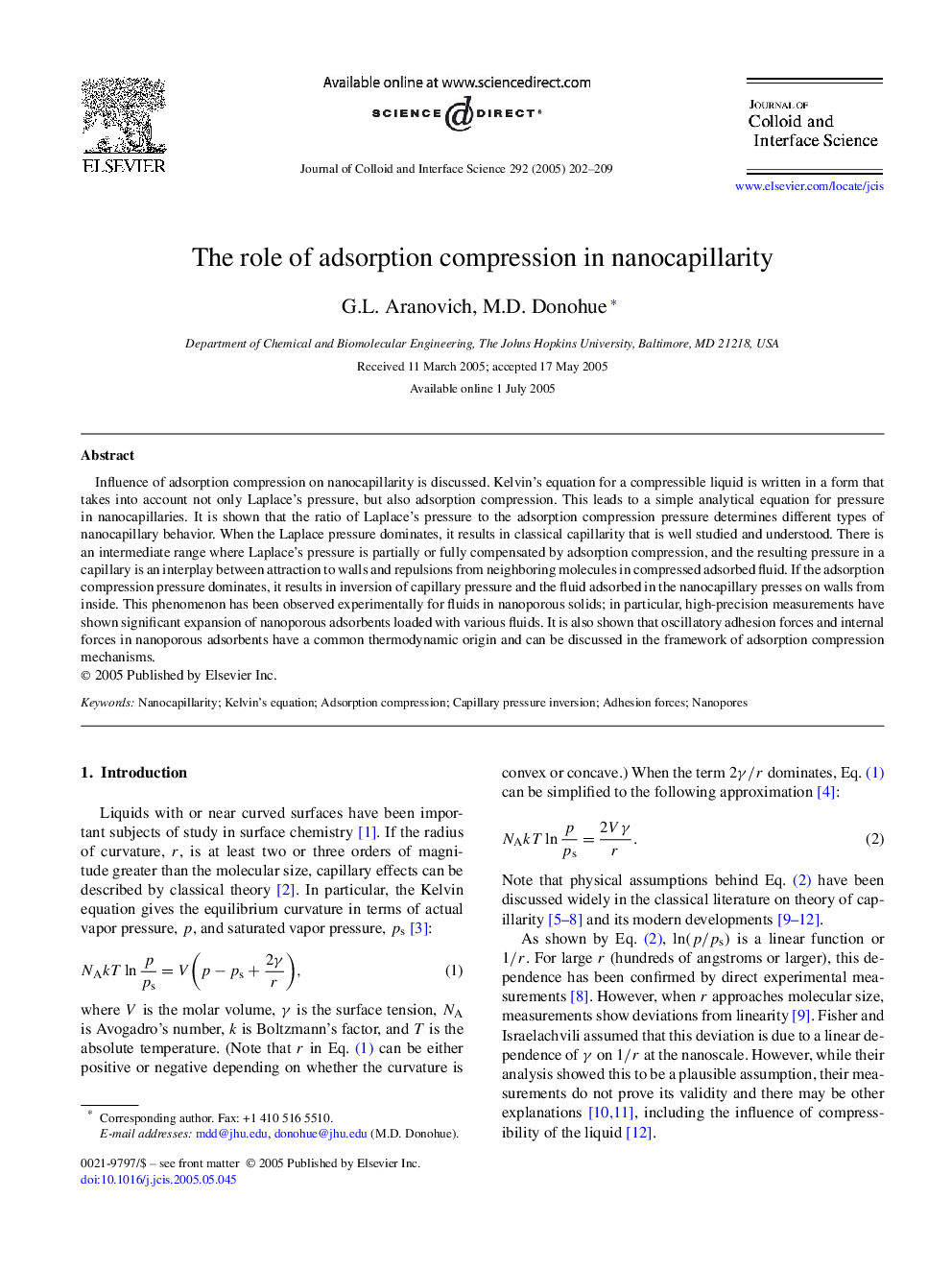| Article ID | Journal | Published Year | Pages | File Type |
|---|---|---|---|---|
| 10377481 | Journal of Colloid and Interface Science | 2005 | 8 Pages |
Abstract
Influence of adsorption compression on nanocapillarity is discussed. Kelvin's equation for a compressible liquid is written in a form that takes into account not only Laplace's pressure, but also adsorption compression. This leads to a simple analytical equation for pressure in nanocapillaries. It is shown that the ratio of Laplace's pressure to the adsorption compression pressure determines different types of nanocapillary behavior. When the Laplace pressure dominates, it results in classical capillarity that is well studied and understood. There is an intermediate range where Laplace's pressure is partially or fully compensated by adsorption compression, and the resulting pressure in a capillary is an interplay between attraction to walls and repulsions from neighboring molecules in compressed adsorbed fluid. If the adsorption compression pressure dominates, it results in inversion of capillary pressure and the fluid adsorbed in the nanocapillary presses on walls from inside. This phenomenon has been observed experimentally for fluids in nanoporous solids; in particular, high-precision measurements have shown significant expansion of nanoporous adsorbents loaded with various fluids. It is also shown that oscillatory adhesion forces and internal forces in nanoporous adsorbents have a common thermodynamic origin and can be discussed in the framework of adsorption compression mechanisms.
Keywords
Related Topics
Physical Sciences and Engineering
Chemical Engineering
Colloid and Surface Chemistry
Authors
G.L. Aranovich, M.D. Donohue,
